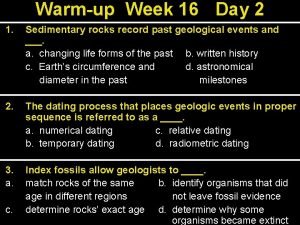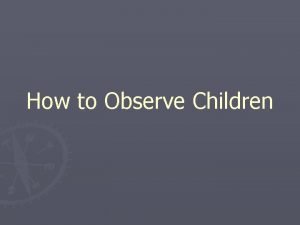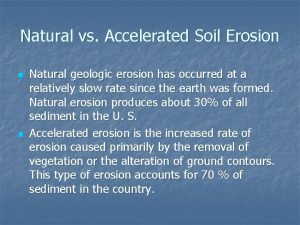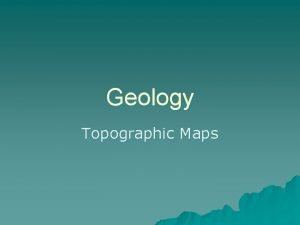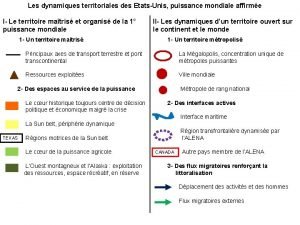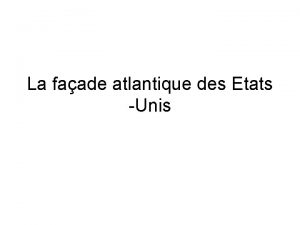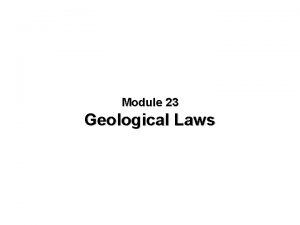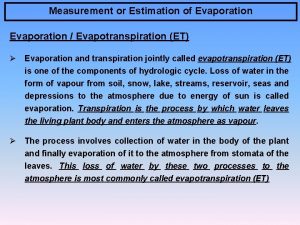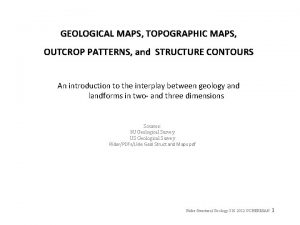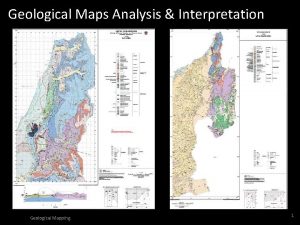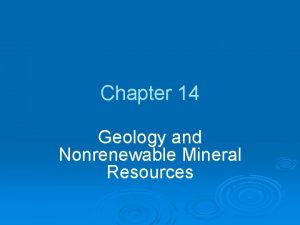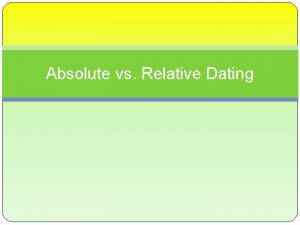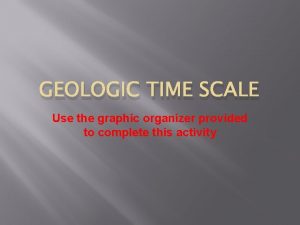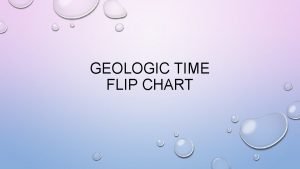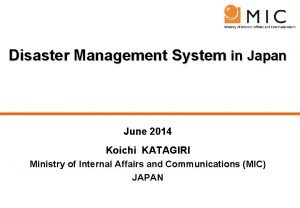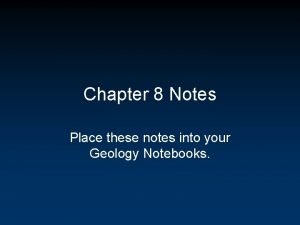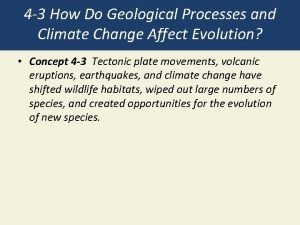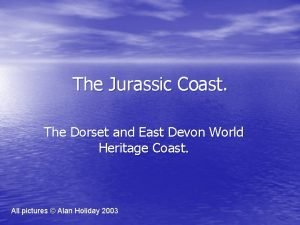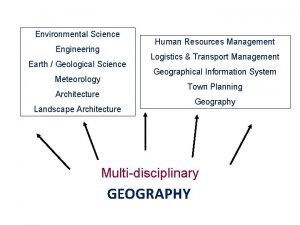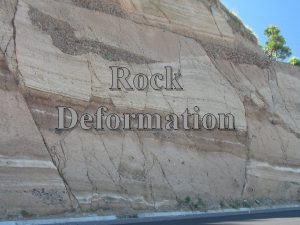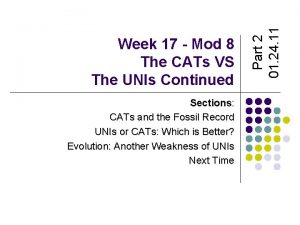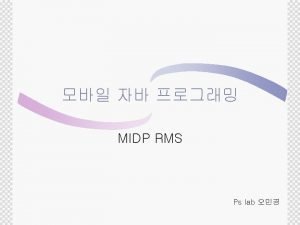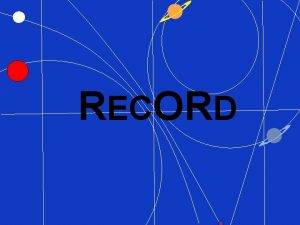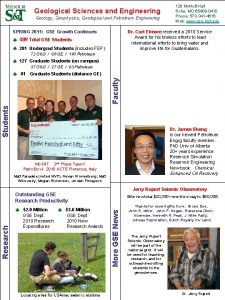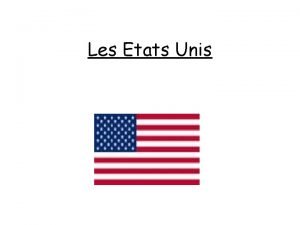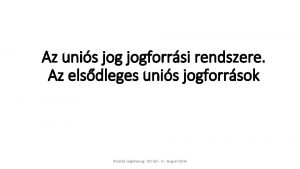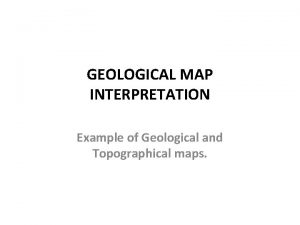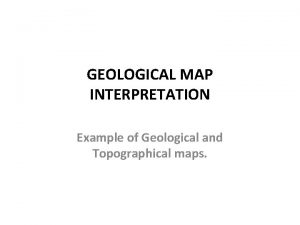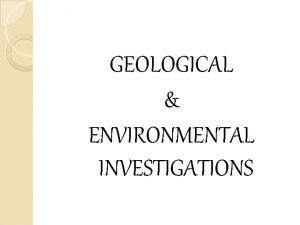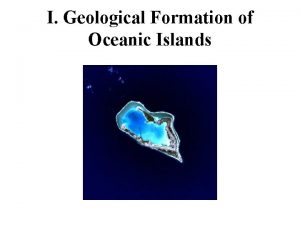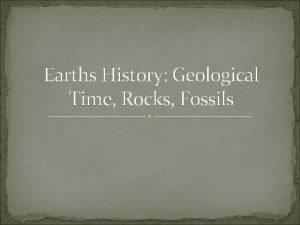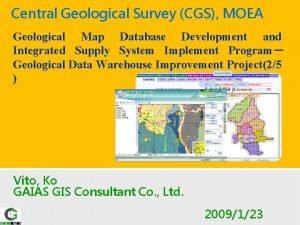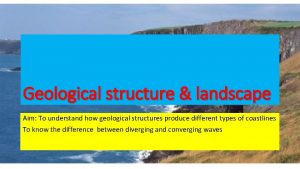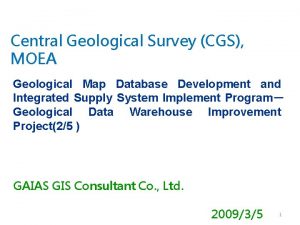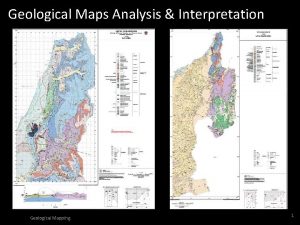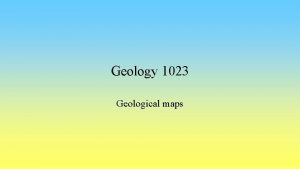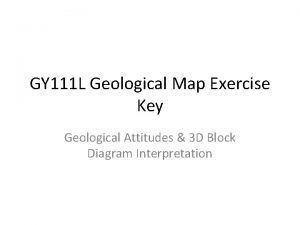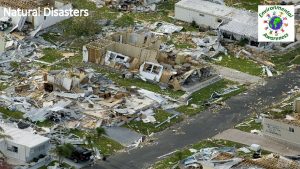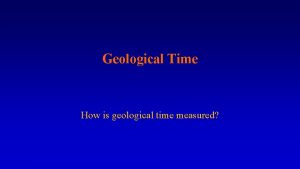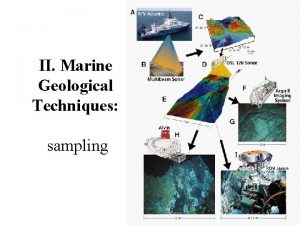Sections Introduction UNIs and the Geological Record UNIs





























- Slides: 29

Sections: Introduction UNIs and the Geological Record UNIs and Evolution CATs and the Geological Record Next Time Part 1 01. 17. 11 Week 16 - Mod 8 The CATs VS The UNIs Continued

Module 8 – Introduction Contrasting these 2 views… See how these 2 hypothesi lead to very different views of the Earth’s past. Author tries to be even handed, but ALL scientists are biased, even a little bit. He believes the data leans heavily in favor of Catastrophism. 2 2

Module 8 – UNIs & The Geological Record Remember UNIs believe that each layer or strata represents a different time period in the Earth’s past. The lower levels represent time that’s long past and the upper levels are from more recent periods in the Earth’s past. 33 3

Module 8 – UNIs & The Geological Record But which layers represent which time period. UNIs don’t believe sed. rock formed in all regions during all time periods. And need the right conditions for sed. rock to form. Must have water or wind. Problem – but you won’t have correct water/wind conditions in ALL regions of the world during ALL time periods. 44 4

Module 8 – UNIs & The Geological Record Therefore, can’t expect to find a layer for EACH time period – find some layers in SOME regions. How do you know which layer pertains to which time period? UNIs use Index Fossils. Defined: fossils considered to represent a certain time period in Earth’s past. 5 5

Module 8 – UNIs & The Geological Record There are many fossils of creatures now extinct. Since UNIs believe each layer represents a certain time period, then the fossils in that layer must have lived during that time period. And if you find certain fossils in one layer and not in another, then UNIs relate that fossil to that layer and therefore to that time period. Certain index fossils indicate certain time periods. 66 6

Module 8 – UNIs & The Geological Record Read through Exp. 8. 1 “A Simulation of Using Index Fossils to Order Rock Layers” Reference Figure 8. 1 to illustrate rock/fossil layers in different regions of the Earth. 77 7

Module 8 – UNIs & The Geological Record Results: this is how UNIs look at the fossil record. Look at strata – several layers – each a certain time period – however, not a layer for EVERY time period – some layers are missing. UNIs think that they can reconstruct the order of how the rocks were laid down by comparing different formations from different regions. 88 8

Module 8 – UNIs & The Geological Record UNIs assumption – each layer of rock contains index fossils – these indicate what time in the Earth’s past the rock was formed. UNIs use index fossils to determine the order in which the rock layers were laid down. 99 9

Module 8 – UNIs & The Geological Record Using this same kind of reasoning, the UNI geologist can determine the order in which each layer in regions “A” through “C” were laid down. How did we figure it out in the experiment? Matched the symbols – the fact that cards were laid down one at a time – Principle of Superposition. 10 10 10

Module 8 – UNIs & The Geological Record In the end, UNIs use the same logic – match index fossils – assume these are the same time period from region to region. If this is all correct, then we can order all the sed rock layers in terms of when they were laid down – observe the pattern. Fig. 8. 2 Also known as “The Geological Column” – a theoretical picture in which layers of rock from around the world are meshed together into a single, unbroken time line. 11 11 11

Module 8 – UNIs & The Geological Record But there is no such thing as a REAL “geological column” – can’t find these anywhere – just a theoretical picture. Assumes that each layer of rock is a separate time period – assumes that index fossils are accurate. It shows the “major” layers – called “eras”. How do they determine the eras? A complex dating system – not very accurate under most circumstances. 12 12 12

Module 8 – UNIs & The Geological Record Fig. 8. 2 – read through column. Trilobites only shown in lower levels, but they were present in over half the levels. This figure shows the most common fossils for each layer. “On Your Own” 8. 1, 8. 2, and 8. 3 13 13 13

Module 8 – UNIs and Evolution Fig. 8. 2 – a progression from simple life forms to more complex – this is background for the… Theory of Evolution – all life on this Earth has a single common ancestor that existed a long time ago. As millions of years passed – offspring – small difference – more offspring – differences added up to form a complex life form. 14 14 14

Module 8 – UNIs and Evolution Fish example – longer fins – more offspring – becomes a hand – becomes arms and legs – after millions & millions of years & offspring – fish can breath out of water – stands upright – grows hair – eventually exhibits language. Aka: The Pile Up the Differences Theory. Figure 8. 2. – simple life – Precambrian – trilobites – fish – amphibians – mammals 15 15 15

Module 8 – UNIs and Evolution This geological column is simply a theory. It does NOT exist anywhere but in books. Based on assumptions. But if assumptions not true, then the whole theory is not true. Remember the Fossil Record? Figure 8. 2 is less than 5% of the fossil record. The other 95% is composed of clams & other similar, hard-shelled creatures. So, this is a tiny, tiny subset of the entire fossil record. 16 16 16

Module 8 – UNIs and Evolution In summary, following all these assumptions leaves 2 major (but flawed) conclusions: 1. You can construct a theoretical geological column that gives you a chronological record of simple to complex life on Earth. 2. Everything on Earth today evolved from a single simple life form millions or billions of years ago (evolution). “On Your Own” 8. 4 and 8. 5 17 17 17

CATS and the Geological Record We’ve seen how the UNIs interpret the Geological Record (Geo. Rec), now let’s see how the CATs interpret it. Remember, CATs believe that the Geo. Rec we see today is the result of one or more catastrophes. Noah’s Flood is the biggest catastrophe and is responsible for much of the Geo. Rec. Other local events took place as well – hurricanes, eruptions, smaller floods, etc. 18 18 18

CATS and the Geological Record But is there evidence that geological structures can form this way? UNIs, after all, do have some evidence for their view. Sedimentary rock is forming today which fits a UNI’s view. But CATs have evidence that is rather dramatic. An earthquake caused a landslide on Mount St. Helens – May 18, 1980. 19 19 19

CATS and the Geological Record A magma column had been building inside the mountain and the landslide caused a weakness in its structure. The mountain, dormant since 1857, blew its top and lava flowed out all over. Eruption – May 18 th to Oct. 18 th – killed 57 people – affected 70 sq. miles – covered a larger area with ash & debris. Explosion = 430 MILLION tons of TNT or 33, 000 atomic bombs. 20 20 20

CATS and the Geological Record This energy release leveled entire forests & caused massive mudflows. Geologists are still studying the amazing data. Discoveries – stratified rock can be made in a matter of hours, not days, not years, etc. Look at Figure 8. 3. Ground-hugging steam mixed with the ash and dirt to form rivers of mud, > 100 mph. Formed stratified rock – varying thickness. 21 21 21

CATS and the Geological Record See figure 8. 4. UNIs think millions of years, this example shows a matter of hours. Remember the Grand Canyon; UNIs believe it took the Colorado River 6 million years. Exp. 6. 5 showed us how fast erosion can take place – speed of the water. Mt. St. Helens had erosion agents of mud, water, steam, debris, etc. 22 22 22

CATS and the Geological Record Figure 8. 5 – 2 canyons – one new and one old. The new one has the same general shape and look of the Grand Canyon – it’s known as the Little Grand Canyon. Therefore, canyons can form very quickly & looks can be very deceiving. UNIs believe the Colorado River carved out the G. C. & the Colorado is at the bottom of G. C. , so it’s logical that this river did it. 23 23 23

CATS and the Geological Record But this assumption is not necessarily correct – figure 8. 6. If a UNI looks at this picture, they’d assume the river eroded it all over millions of years. But at Mt. St. Helens, this canyon was formed quickly as a result of fast moving mudflow; then came the river. So, this tells us that there at least 2 explanations for canyons & stratified rock. 24 24 24

CATS and the Geological Record When you go to the Grand Canyon and do a tour, the guide will tell you that the Colorado River carved out the GC through erosion over a period of 6 Million years. But the only canyons modern man has seen formed didn’t form that way. So why are UNIs so confident? Because they have to believe it in order for their hypothesis to remain true. 25 25 25

CATS and the Geological Record But the CATs hypothesis can also explain these formations. Review Mt. St. Helens for a moment – lots of energy (33, 000 atom bombs) – must have been an enormous catastrophe. In terms of death and destruction, yes it was. But on a geological scale – it was rather ordinary. Therefore, the results would be sort of limited as well. 26 26 26

CATS and the Geological Record At least compared to what would be formed by a SERIOUS catastrophe. Bible – the most historically accurate document of ancient history – let’s take its word about the flood. Make a logical conclusion – every major culture – worldwide flood story – think of the huge geological implications – compared to a worldwide flood, Mt. St. Helens’ effect would hardly be noticeable. 27 27 27

CATS and the Geological Record It would be small compared to a world-wide flood. Instead of several feet high, a worldwide flood could create strata hundreds of feet high. Same with canyons. Instead of a small canyon, one could get the Grand Canyon. On Your Own 8. 6 and 8. 7 28 28 28

For Next Time Finish reading Module 8. Write up “On Your Own” 8. 1 to 8. 7 DO NOT TURN THESE IN YET!!! No experiments for this module. It’s ok to save all the OYOs from one module & turn in at one time – but don’t mix them. One set from a particular module. 29 29 29
 Sedimentary rocks record past geological events and ____.
Sedimentary rocks record past geological events and ____. Anecdotal record vs running record
Anecdotal record vs running record Differentiate between geological and accelerated erosion
Differentiate between geological and accelerated erosion Two different contour lines cannot cross because
Two different contour lines cannot cross because Study abroad monash
Study abroad monash Avec toi seigneur tous ensemble paroles
Avec toi seigneur tous ensemble paroles Kjell henriksen observatory
Kjell henriksen observatory Sif unis france
Sif unis france Sikkk unis ac id
Sikkk unis ac id Les dynamiques territoriales des etats unis
Les dynamiques territoriales des etats unis Facade atlantique des etats unis
Facade atlantique des etats unis Continental drift vs plate tectonics theory
Continental drift vs plate tectonics theory Geographical influence on architecture
Geographical influence on architecture Unconformity
Unconformity Geological engineering ubc
Geological engineering ubc Geological map sweden
Geological map sweden Rohwers formula
Rohwers formula Outcrop patterns
Outcrop patterns Geological map interpretation
Geological map interpretation Geological processes
Geological processes Define relative dating
Define relative dating Earth history and geologic time graphic organizer
Earth history and geologic time graphic organizer Rubric for designing geological time scale
Rubric for designing geological time scale Geological disaster example
Geological disaster example Geological events
Geological events How do geological processes affect evolution
How do geological processes affect evolution The geological time scale
The geological time scale What do geological engineers invent
What do geological engineers invent Geological
Geological Plunging anticline
Plunging anticline
